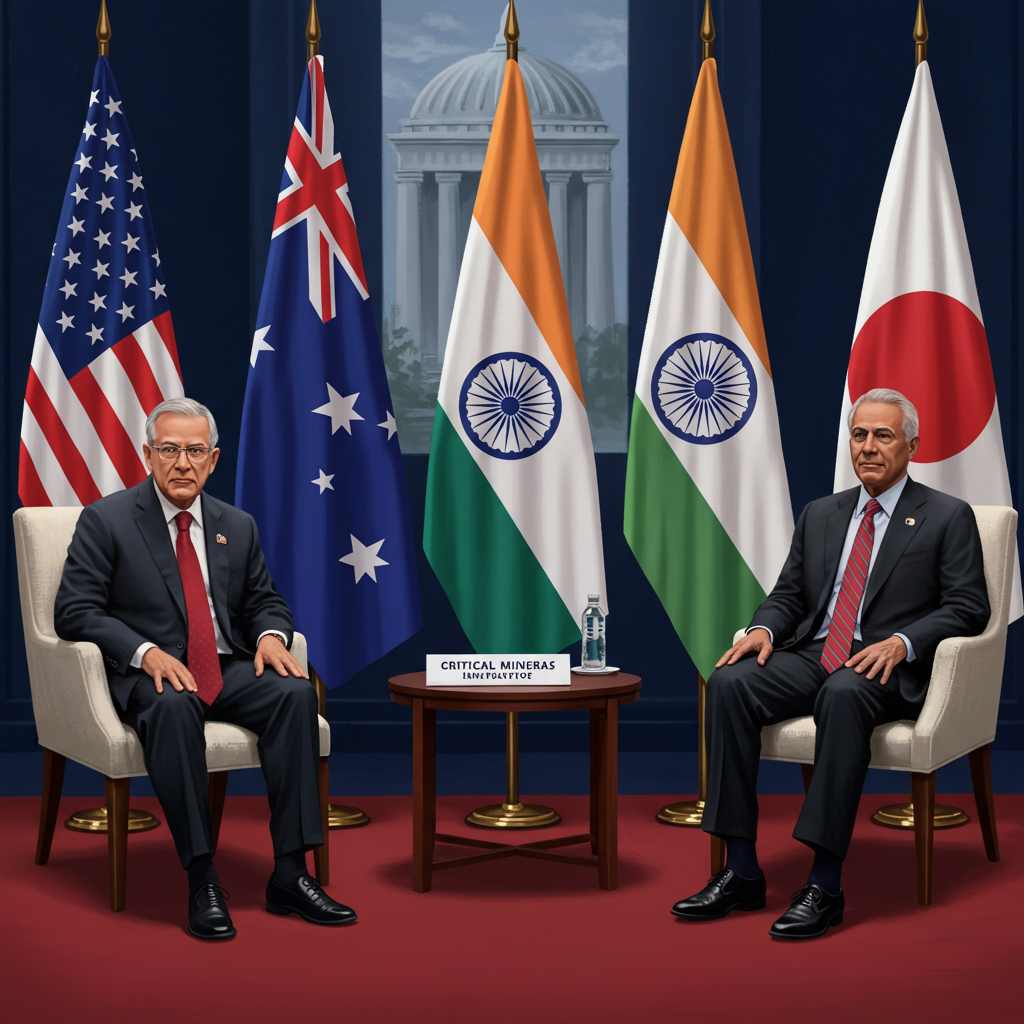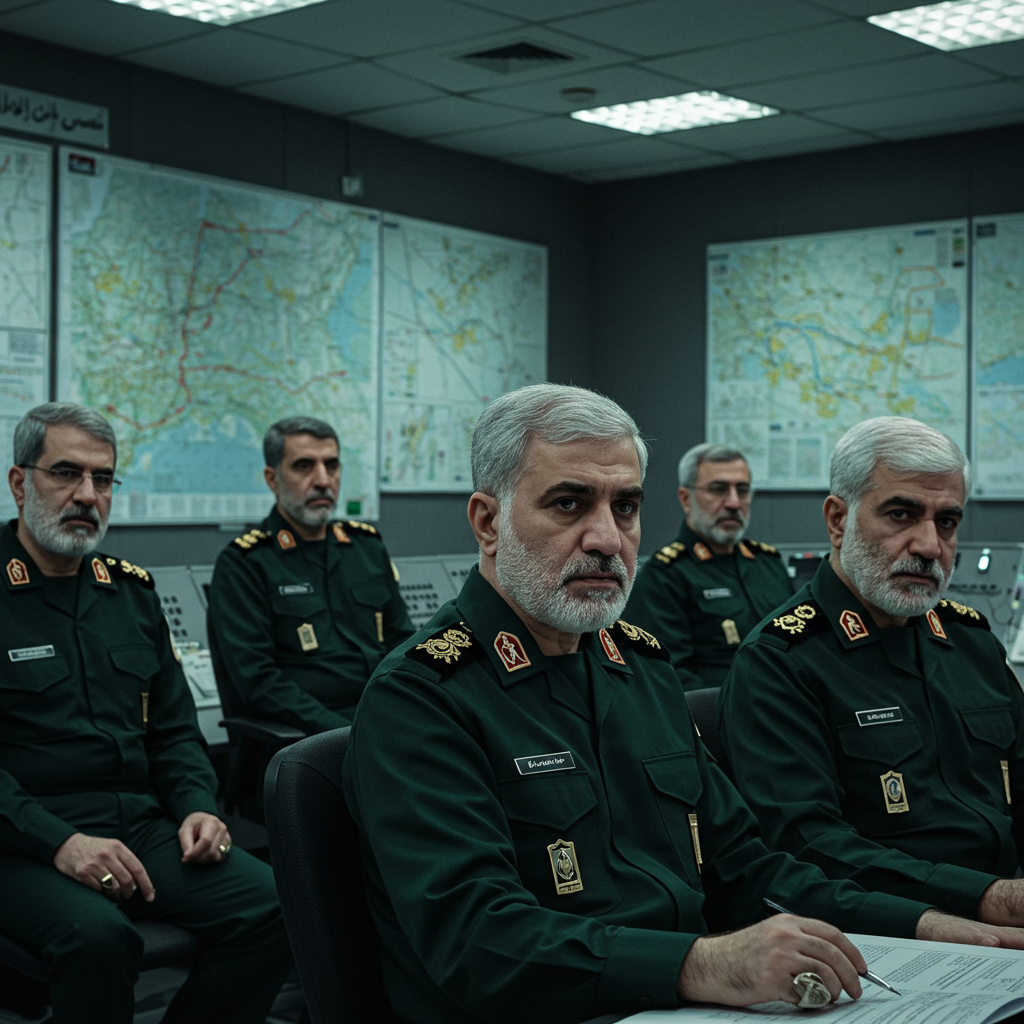In a significant development signaling renewed focus on economic security, the United States, alongside its key Indo-Pacific partners Australia, India, and Japan, officially launched a collaborative effort targeting critical minerals. Announced during a meeting of the Quad foreign ministers in Washington, D.C., this initiative aims to bolster the collective resilience of the four nations by diversifying the global supply chain for these essential resources. The launch comes at a complex time for the Quadrilateral Security Dialogue (Quad), as members navigate existing trade disagreements and other geopolitical challenges, highlighting the strategic importance placed on securing critical mineral access despite internal frictions.
Why Critical Minerals Matter
Critical minerals are not merely commodities; they are indispensable building blocks for modern technology, defense systems, and the rapidly expanding green energy sector. Rare earths, lithium, cobalt, and other strategic minerals are vital components in electric vehicles, advanced electronics, batteries, solar panels, and military equipment. Control over these resources translates directly into economic leverage and national security strength.
The current global landscape presents significant vulnerabilities. A single nation, particularly China, holds dominant positions in mining, processing, and refining many critical minerals. This concentration creates potential points of leverage and risk for countries reliant on these supplies, including the Quad members. Ensuring a stable, secure, and diversified supply chain for critical minerals is therefore a paramount strategic imperative for economic stability and technological independence in the 21st century.
The Quad’s Strategic Response
Recognizing the shared vulnerability and the strategic importance of these resources, the Quad partners unveiled the Quad Critical Minerals Initiative. This ambitious expansion of their partnership is explicitly designed to strengthen economic security and collective resilience. The primary goal is to enhance collaboration to secure and diversify critical minerals supply chains, reducing dependence on concentrated sources.
The announcement was made jointly by the foreign ministers of the four nations: U.S. Secretary of State Marco Rubio, Australia’s Foreign Minister Penny Wong, India’s External Affairs Minister Subrahmanyam Jaishankar, and Japanese Foreign Minister Takeshi Iwaya. Speaking at the State Department meeting in Washington, Secretary Rubio emphasized the need to “deliver action” on specific issues like supply chain diversification, calling the Quad countries vital strategic partners. To facilitate industry collaboration, approximately 30 to 40 companies from Quad nations were scheduled to meet concurrently at the State Department, discussing practical steps for cooperation.
Navigating Internal Frictions
While the critical minerals initiative signifies unity on a key strategic front, the Quad partners are also navigating a complex landscape marked by bilateral and multilateral tensions. U.S. President Donald Trump’s ongoing global tariff offensive has impacted all Quad members, creating trade frictions that complicate relations.
Trade discussions between the U.S. and India, for instance, require “give and take” to find common ground, according to India’s External Affairs Minister Jaishankar, who expressed hope for a successful conclusion to talks aimed at helping U.S. firms compete in India. Similarly, trade uncertainties have affected U.S.-Japan relations. Japan reportedly postponed an annual ministerial meeting with the U.S. State and Defense Departments following perceived U.S. pressure for increased defense spending. Analysts like Nicholas Szechenyi suggest U.S.-Japan ties have lost momentum amidst “all-consuming” tariff negotiations and public lectures on defense spending.
Furthermore, other issues test the relationships. Differing perspectives emerged regarding claims that U.S. intervention averted a major conflict between India and Pakistan following an attack in India-administered Kashmir in April. India maintains that trade was not a factor in the ceasefire, while acknowledging that “relationships will never be free of issues” and require persistent effort to keep a positive trajectory. The Quad foreign ministers’ joint statement did condemn the attack in Kashmir, though without explicitly naming Pakistan, which denied responsibility for the incident. Adding another layer of complexity, a Financial Times report highlighted anxiety in Australia potentially stemming from a Pentagon review of the massive AUKUS nuclear submarine project, reportedly led by a senior defense official.
Beyond Minerals: Broader Quad Cooperation
Despite these challenges, the Quad continues to foster cooperation in other critical areas. U.S. Defense Secretary Pete Hegseth met with India’s Jaishankar, expressing hope for building upon defense integration efforts. Hegseth noted the potential completion of major U.S. defense sales to India and expansion of shared defense industrial cooperation and co-production initiatives.
The foreign ministers’ meeting itself was the second such gathering this year, described by Australia’s Penny Wong as a signal of the partnership’s importance and the urgency of shared challenges. Regular Quad meetings are planned as the countries prepare for a leaders’ summit scheduled to take place in India later this year, demonstrating a commitment to ongoing high-level dialogue across a range of issues.
Expert Perspectives and Analysis
Diversifying critical mineral supply chains away from a dominant player like China presents significant logistical, financial, and technical hurdles. Establishing new mining operations is costly and time-consuming, often facing environmental or political opposition. Developing processing and refining capacity requires massive investment and specialized expertise, areas where China has built a considerable lead over decades. Therefore, the Quad initiative is not a quick fix but a long-term strategic endeavor requiring sustained collaboration and investment.
The launch of this initiative amidst existing trade frictions and geopolitical disagreements underscores the strategic urgency placed on critical minerals. It reveals a Quad partnership capable of identifying areas of vital shared interest (economic security, supply chains) and taking concrete steps, even while navigating complex bilateral issues. Success will depend not just on technical cooperation but also on managing these internal pressures to maintain a united front on core strategic objectives. The Quad’s ability to compartmentalize and progress on crucial initiatives like critical minerals diversification, despite other challenges, will be a key indicator of its maturity and effectiveness as a security and economic grouping.
Frequently Asked Questions
What is the Quad Critical Minerals Initiative?
The Quad Critical Minerals Initiative is a collaborative effort announced by the United States, Australia, India, and Japan. Its main purpose is to strengthen the economic security and collective resilience of the four Quad nations by working together to secure and diversify the global supply chains for critical minerals. This aims to reduce reliance on concentrated sources, such as China, for these essential resources used in technology and defense.
Why is diversifying critical mineral supply chains challenging?
Diversifying critical mineral supply chains faces multiple difficulties. These include the high cost and long timelines required to establish new mining projects, potential environmental concerns, and the significant investment and technical expertise needed to build processing and refining facilities outside of existing hubs like China. Developing entirely new, resilient supply routes requires global coordination, substantial capital, and overcoming established market economics.
How are existing tensions impacting Quad cooperation?
While the Quad countries are uniting on critical minerals, they face existing tensions from issues like U.S. trade tariffs impacting all members, complex bilateral trade talks (e.g., US-India, US-Japan), differing views on regional conflicts (e.g., India-Pakistan), and pressures regarding defense spending and projects (e.g., US-Japan, AUKUS review). These frictions create a complex geopolitical backdrop, but the launch of the minerals initiative demonstrates the partners’ ability to prioritize and collaborate on areas of shared strategic importance despite other disagreements.
Conclusion
The launch of the Quad Critical Minerals Initiative marks a significant strategic step by the United States, Australia, India, and Japan to address a key vulnerability in the global economy and their collective security. By focusing on diversifying critical mineral supply chains, the Quad partners are taking concrete action to build resilience against potential disruptions and counter the dominance of single-country suppliers. While the path forward is fraught with challenges, including managing existing trade disputes and geopolitical complexities among members, the very announcement of this initiative amidst these tensions underscores the high priority placed on securing these vital resources. The success of this ambitious plan will hinge on sustained cooperation, investment, and the ability of the Quad nations to navigate internal frictions while pursuing their shared strategic objectives in the Indo-Pacific region.




